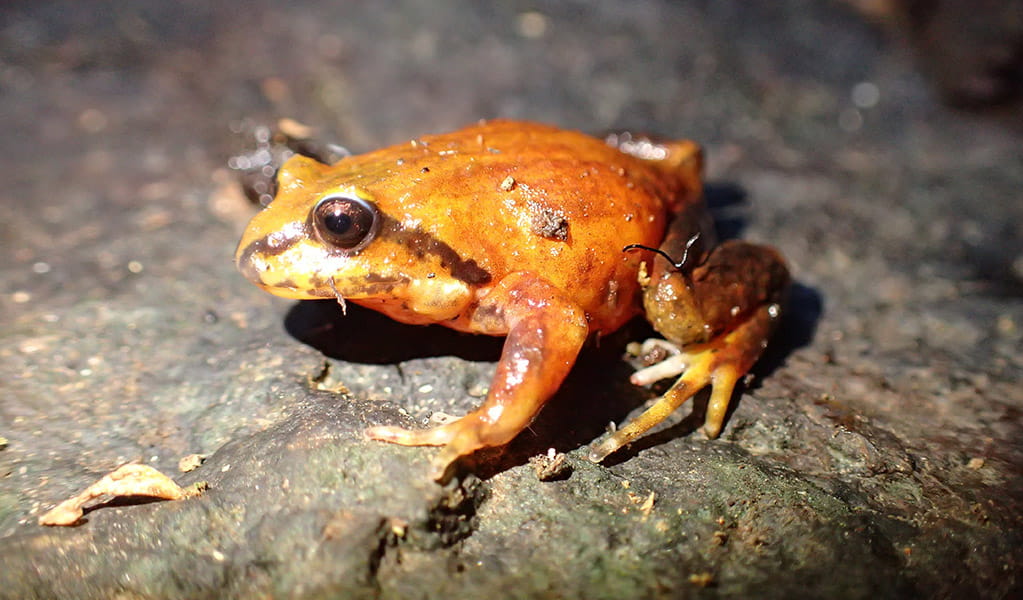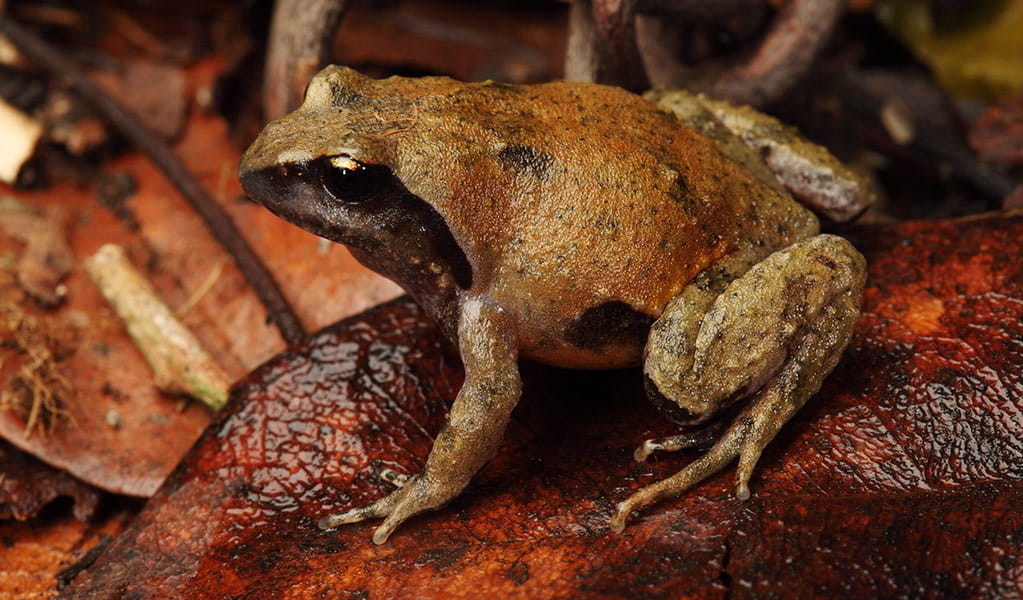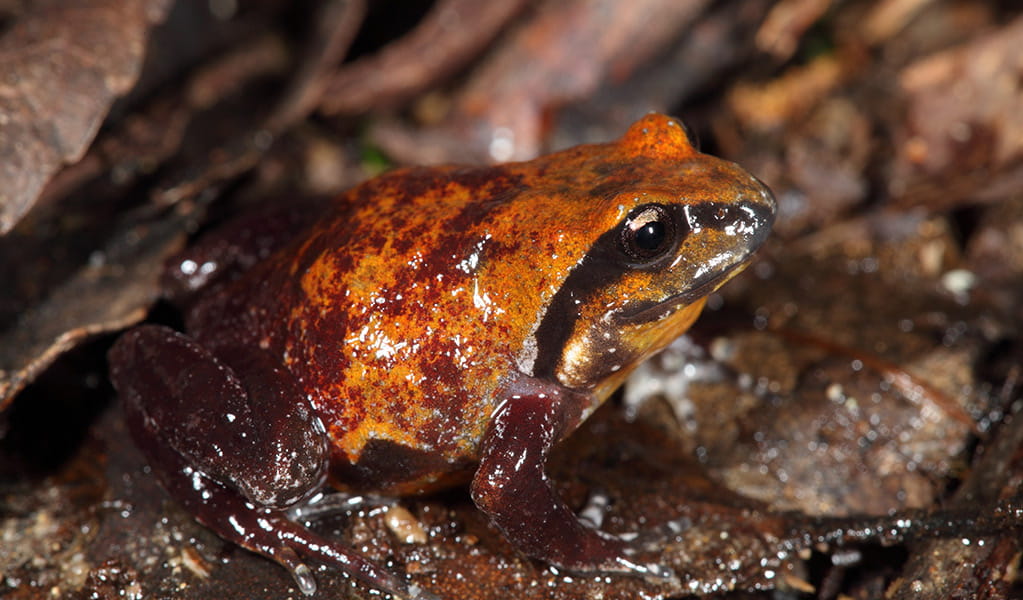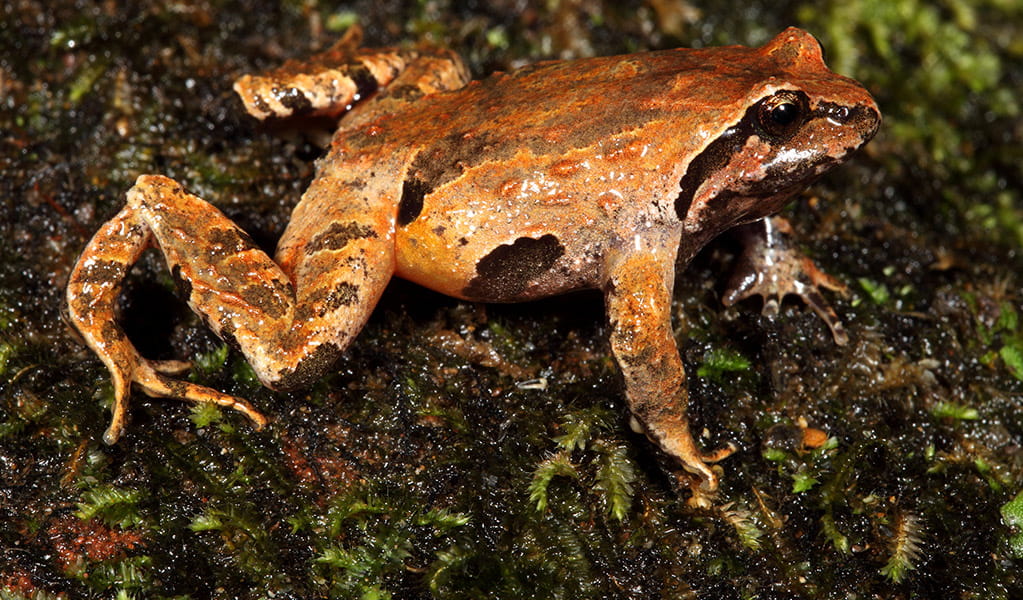Endangered mountain frogs conservation
The subtropical rainforests of north-east NSW are a biodiversity hotspot with one of the highest concentrations of threatened frog species in Australia. NSW National Parks is working to safeguard the future of endangered mountain frogs restricted to these northern mountain areas.
Philoria is a genus of frogs that are all confined to mountain areas in eastern and southern Australia, commonly referred to as ‘mountain frogs’. The Northern Rivers area in north-east NSW, near the Queensland border, is home to several endangered species of mountain frog, all with highly restricted and specialised habitats. These include:
- Mountain frog (Philoria kundagungan)
- Richmond mountain frog (Philoria richmondensis)
- Loveridge’s frog (Philoria loveridgei)
- Pugh's mountain frog (Philoria pughi)
The vulnerable spaghnum frog (Philoria sphagnicolus) is also found here, while the Mount Ballow mountain frog (Philoria knowlesi) has only recently been described, and is even more restricted in range.
Six of the 7 species of mountain frogs only occur in Australia’s World Heritage Gondwana Rainforests in north-eastern NSW and south-eastern Queensland.
Under threat
Two of the most threatened species are the mountain frog and Richmond mountain frog. These small, 3cm-long species construct small tunnel and nesting chambers in the mud next to headwater mountain soaks within rainforest and wet sclerophyll forests. These isolated habitats are highly vulnerable to climate change impacts, including increasing temperatures and variable rainfall.
Feral pigs are also a significant threat to the species, potentially wreaking havoc on frog populations by predation and destroying habitat including breeding chambers.
Conservation
Dedicated conservation efforts by NSW National Parks staff and partners are giving these endangered mountain frogs a more hopeful future.
Watch our video to learn more about conservation efforts to protect these endangered mountain frogs.
Conservation activities for these endangered mountain frogs include:
- Assets of Intergenerational Significance (AIS) declarations providing stronger legal protections, funding and conservation management for mountain frog habitat.
- Landscape monitoring using feeder and camera stations to assess pig activity.
- Installation of feral pig-exclusion fencing to establish protective barriers around the frogs’ sensitive core habitat, breeding zones and translocation sites.
- A collaborative fencing initiative, working with local landholders, is part of a broader feral animal management program across multiple national parks in the Richmond River region.
- A cross-border Mountain Frog Working Group for cooperative actions with Queensland Parks and Wildlife.
- A captive breeding program for mountain frogs and Richmond mountain frogs is raising mountain frogs and Richmond mountain frogs from eggs. When mature, these frogs will be released into fenced areas to increase the genetic diversity and resilience of existing populations and re-establish a locally extinct population. The program is led by Southern Cross University, with help from Saving our Species, World Wildlife Fund, and a Federal Government Saving Native Species Grant.
Extra protections
The mountain frog, Loveridge’s frog, and Richmond mountain frog have been declared Assets of Intergenerational Significance, giving these species and their habitat strong legal protections and management requirements to secure them from extinction.
The Fleay’s barred frog and Wollumbin pouched frog are also threatened frog species found in the Northern Rivers area that are protected under the AIS program.
Get involved
Now more than ever our native wildlife needs our support. Here’s how you can help:
- If you spot a feral pig in Richmond Range National Park, Toonumbar National Park, Yabbra National Park, Koreelah National Park or Tooloom National Park, report your sighting to the NSW National Parks and Wildlife Service. This includes sightings of scats and tracks. Include the location, number of pigs and a photo if you can get one.
- Become a citizen scientist. Take part in Australia’s biggest frog count during FrogID Week held annually in November.
- Learn more about frog chytrid fungus. See how you can help stop it spreading and what to do if you find a sick frog.
You might also like
-
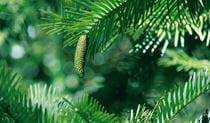
Assets of Intergenerational Significance (AIS)
Assets of Intergenerational Significance (AIS) are declared to bolster protections for an area with exceptional environmental or cultural values, like...
-
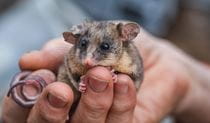
Protecting threatened species in parks
Around 84% of the approximately 900 threatened species in NSW are found in our national parks and reserves. Find out what we're doing to protect threa...
-
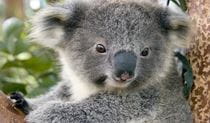
Saving our Species conservation program
Today, we're at risk of losing nearly 1000 of our state's native animals and plants. That's why the NSW Government established Saving our Species. It'...
-
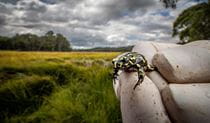
Threatened Species Framework for zero extinctions
The NSW National Parks and Wildlife Service (NPWS) Threatened Species Framework outlines a series of actions to meet our commitment of zero extinction...

